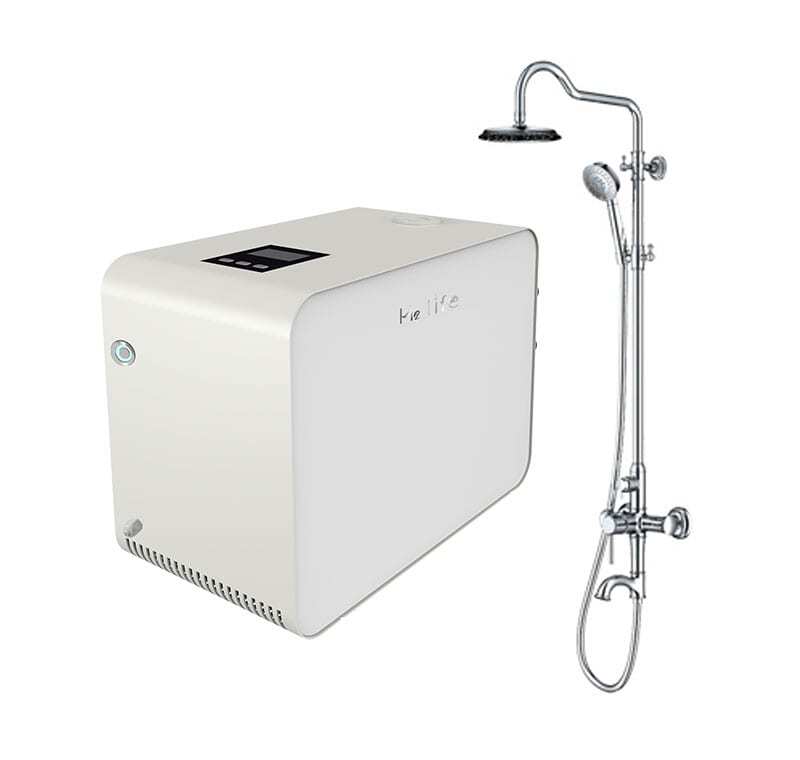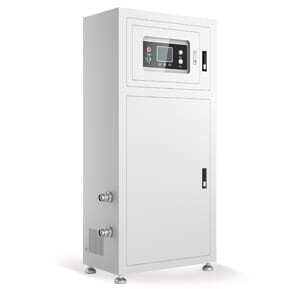Testing of micronano bubbles at various salinities
A microbubble (MB) or a nanobubble (NB) is a small bubble with a diameter between 10-50 m and *200 nm. These tiny bubbles are used in a variety of applications. Micro-nanobubbles (MNB) are bubbles with a diameter between 0.1 micrometers and 10 micrometers. Several bio-related fields, such as bioremediation, aquaculture, and plant cultivation have shown considerable interest in the MNBs technology. Macro-bubbles are superior to MNBs as they have a larger interfacial area, a higher inner pressure, a lower speed of rise in water, and a long lifetime. In addition, the way that MNBs are generated affects their properties. As a result, dissolved oxygen levels will be greatly enhanced.
According to a study to determine the effects of water with different salinities on Micro Nano Bubble Generator, when using the same amount of power and air flow, NBT transfers 8.5 times more oxygen into water at 30 ppt salinity than it does into city water.
In aquaculture, aeration is important
As a result of diffusion from the air and photosynthesis by aquatic plants, natural oxygenation cannot meet the combined oxygen demands of cultured species and other biota. Partially exchanged water from sources with oxygenated water is one method of increasing dissolved oxygen concentrations in ponds, fertilizer addition to stimulate photosynthesis in aquatic plants, hydrogen peroxide application that releases oxygen through chemical reaction, addition of pure oxygen gas to the water, and use of mechanical aerators. Exchange of water and aeration are the most common and most effective methods.

Aquaculture requires aerators to meet the oxygen requirements of the cultured organisms for respiration. By promoting nitrification, adequate aeration also helps to manage ammonia. Aeration can take many forms in aquaculture. Air is mixed with water using devices such as vertical pumps, pump sprayers, and paddle wheels; or air is mixed with water using propeller-aspirator-pumps and diffused air systems. Increasing interest has been shown in using diffusers to aerate aquaculture systems, especially in highly intensive grow-out or holding units.
Following the recommendations of the American Society of Civil Engineers, the tests were conducted. It has been demonstrated that surface aerators for use in aquaculture can transfer oxygen in freshwater, but it is unclear whether salinity affects the performance of aerators. In order to determine the influence of water salinity using Micro Nano Bubble Generator. It gave results that with the same amount of power and air flow, NBT transfers 8.5 times more oxygen into water than would be transferred into city water with a salinity of 30 ppt.
Size of bubbles and its effect
This parameter is important in diffused bubble systems because it determines the surface area between the bubbles, their rise velocity, and their mass-transfer coefficients. The amount of oxygen transferred from air to water depends on the bubble size. The efficiency of oxygen transfer is enhanced with smaller bubbles. The ratio of surface areas of two spherical bubbles with different diameters is inversely proportional to the ratio of their diameters when the same volume of air is introduced into water.
For more efficient aeration or oxygenation of municipal water, wastewater, and aquaculture ponds, it is necessary to reduce gas flow and pressure, which in turn, requires less pumping energy. Bubbles with a smaller surface area have a greater volume of gas than bubbles with a larger volume. Since small bubbles have a larger surface area, the gas dissolves in the liquid faster, resulting in a reduced required gas flow.
In small bubbles, the rise velocity and mass-transfer coefficient are sensitive to bubble diameter. Due to these properties, micro bubbles can be used to transfer oxygen in processes that consume oxygen (e.g., aquaculture, hydroponic cultivation, aerobic fermentation, and aerobic sewage treatment).
Salinity effects on water
As a result of salinity influencing bubble size, aerator performance is directly influenced by salinity. At salinities of 10 ppt and above, propeller-aspirator-pump aerators released smaller bubbles, however, when aeration efficiency increased with salinity above 10 ppt, aeration efficiency did not improve. In addition, test tank geometry influences aerator performance.
The SAE values are lower in freshwater tests, because small tanks are used. However, test tank geometry would have no effect on salinity’s influence on oxygen transfer because bubble size does not depend on tank geometry but on salinity.
MNBs are not affected by salinity in terms of size, but by salinity in terms of performance. MNBs adsorb positively charged microorganisms successfully due to their negative charge in different salinities. Furthermore, when the bubble collapses, the ion concentration around the gas-water interface increases, possibly resulting in radical formation from biological activity. At 0.7 g/L salinity, the bubble stagnation time is shorter the greater the dissolved oxygen enhancement. This effect is reversed at higher salinities.
